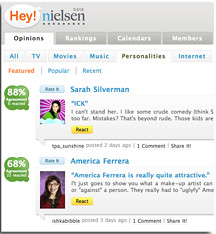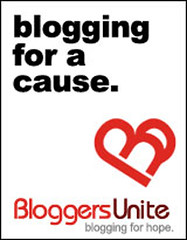"Congress shall make no law respecting an establishment of religion, or prohibiting the free exercise thereof; or abridging the freedom of speech, or of the press; or of the people peaceably to assemble, and to petition the Government for a redress of grievances." — First Amendment, the Bill of Rights
On September 25, 1789, the First Congress of the United States ratified 10 amendments of the Constitution.
Tonight at 7 p.m. (CST), I have been invited to make my second guest appearance on The Gylon Jackson Show, this time to discuss the First Amendment and how it might pertain to bloggers. If you have not heard of Jackson before, visit his blog Don’t Bark Bite. Jackson covers a diverse array of topics and you’ll always be surprised by what you find there.
The first time I was a guest on his show was late last Thursday as part of the Bloggers Unite campaign. We discussed the campaign and various forms of abuse, ranging from domestic abuse to the abuse of free speech (if there is such a thing).
If you missed the show on Thursday, you can still catch it by visiting The Gylon Jackson Show archive. Tonight’s show, in fact, developed out of the show that discussed abuse.
So why give up part of a Sunday night to listen to an online radio show? I dunno. That is up to you. But what I can do is give you three reasons I’m giving up some of my Sunday for the First Amendment.
• As someone who has and occasionally still works as a journalist, the First Amendment is near and dear to my heart. While my confidence in it is often tested, it is one of the more profound, important, and neglected additions to the Constitution of the United States.
• Jackson is an amazing host, courageous individual, and it’s hard to believe that last Thursday was his first foray into online radio.
• “Libdrone,” who writes The Thin Red Line recently reminded me that Sept. 29 to Oct. 6 is Banned Book Week. You can learn more about it at the American Library Association.
If you cannot make the show, please come back on Tuesday for a recap, archive link, and some more information about banned book week (tomorrow I will be recapping our top posts of the third quarter). You never know. These discussions, on this blog or on the show, might open your eyes as to why civility on the Web is appreciated, but should never supercede our most basic and fundamental rights. Good night and good luck.

On September 25, 1789, the First Congress of the United States ratified 10 amendments of the Constitution.
Tonight at 7 p.m. (CST), I have been invited to make my second guest appearance on The Gylon Jackson Show, this time to discuss the First Amendment and how it might pertain to bloggers. If you have not heard of Jackson before, visit his blog Don’t Bark Bite. Jackson covers a diverse array of topics and you’ll always be surprised by what you find there.
The first time I was a guest on his show was late last Thursday as part of the Bloggers Unite campaign. We discussed the campaign and various forms of abuse, ranging from domestic abuse to the abuse of free speech (if there is such a thing).
If you missed the show on Thursday, you can still catch it by visiting The Gylon Jackson Show archive. Tonight’s show, in fact, developed out of the show that discussed abuse.
So why give up part of a Sunday night to listen to an online radio show? I dunno. That is up to you. But what I can do is give you three reasons I’m giving up some of my Sunday for the First Amendment.
• As someone who has and occasionally still works as a journalist, the First Amendment is near and dear to my heart. While my confidence in it is often tested, it is one of the more profound, important, and neglected additions to the Constitution of the United States.
• Jackson is an amazing host, courageous individual, and it’s hard to believe that last Thursday was his first foray into online radio.
• “Libdrone,” who writes The Thin Red Line recently reminded me that Sept. 29 to Oct. 6 is Banned Book Week. You can learn more about it at the American Library Association.
If you cannot make the show, please come back on Tuesday for a recap, archive link, and some more information about banned book week (tomorrow I will be recapping our top posts of the third quarter). You never know. These discussions, on this blog or on the show, might open your eyes as to why civility on the Web is appreciated, but should never supercede our most basic and fundamental rights. Good night and good luck.

















